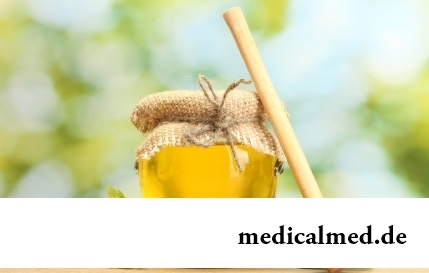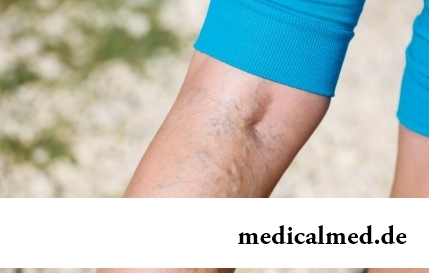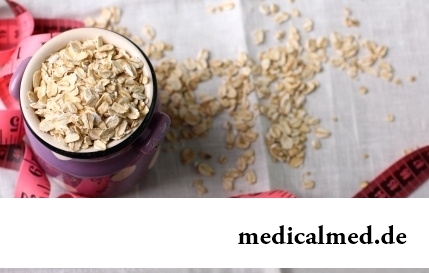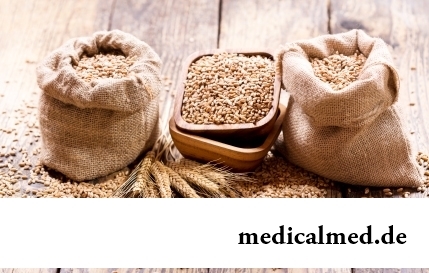





Balsam vinegar
Description of balsam vinegar
Balsam vinegar call the sweet and acid sauces invented in the Italian city of Modena. For the first time it is mentioned in the historical documents dated 1046.
 Balsam vinegar (differently – "бальзамик") belongs to the most refined and expensive food vinegar which is manufactured in Italy in provinces Modena and Redzho-Aemilia. Traditionally it very dark color with sweet fruit aroma and a dense consistence. Its cheaper analogs made of red wine on the simplified technology which is not demanding long endurance, lighter color also considerably differ in flavoring characteristics.
Balsam vinegar (differently – "бальзамик") belongs to the most refined and expensive food vinegar which is manufactured in Italy in provinces Modena and Redzho-Aemilia. Traditionally it very dark color with sweet fruit aroma and a dense consistence. Its cheaper analogs made of red wine on the simplified technology which is not demanding long endurance, lighter color also considerably differ in flavoring characteristics.
Interesting is the fact that the marquis Bonifazio who was the owner of the lock of Kanoss carried in a gift to future king of Franconia Henry II a small keg with vinegar, having put thereby tradition to present to the palace nobility and kings gifts. Balsam vinegar as it "a royal gift" testified to prosperity of a family, and also was a rich dowry in families with marriageable juveniles. In those days there was no uniform recipe of preparation of this seasoning and its production was the privilege only of a limited circle of families of the Italian aristocracy.
Way of preparation and composition of balsam vinegar
Distinctive feature of preparation of balsam vinegar from wine are the used raw materials. Balzamik make of a grape must – the wrung-out juice of fresh berries. The must, as a rule, of white grades of grapes, is uvarivat to a condition of dense dark syrup.
Today release two certified types of a product:
- Balsam vinegar from Modena PGI made of the concentrated grape must, wine vinegar and caramel. It is rather inexpensive as on technology the term of its endurance makes 2 months;
- The traditional balsam vinegar prepared from the grapes gathered in provinces Modena and Redzhio-Aemilia at the certified producers by fermentation with the subsequent aging in wooden barrels of various grades of trees: oak and ash-tree (smallest), cherry or chestnut (average barrels), mulberry tree (big barrels). As a rule, this vinegar is made on small productions. The term of endurance of such vinegar – not less than 12 years.
Also also other types of a balsamico which recipe of preparation considerably differs from traditional are made. Such thickeners as starch, corn syrup, glucose or fructose, pectin, seeds of a carob tree and some other can be a part of balsam vinegar. As a rule, similar vinegar does not demand endurance. However and there is practically no advantage of the balsam vinegar executed without respect for ancient technologies, and it can be used only as culinary seasoning.
Are a part of balsam vinegar (in 100 g):
- 76,45 g of water;
- 0,49 g of proteins;
- 17,03 g of carbohydrates;
- 0,37 g of ashes;
- Macrocells – potassium (112 mg), and also sodium, phosphorus and magnesium;
- Microelements – iron in number of 0,72 mg and insignificant amount of manganese, copper and zinc.
Besides, balsam vinegar includes polyphenols, pectinaceous substances, acetic and pyroracemic acids. Inexpensive analogs of vinegar also may contain caramelized sugar, wine vinegar, fragrances, a concentrate of a grape must and various thickeners.
Advantage of balsam vinegar
According to some historical data balsam vinegar was initially used in the medical purposes from where it also received the name. So, in the first year of Great Plague of 1503 it was applied as medicine. Also it was traditionally used as the calming and outside wound healing medicine.
The advantage of balsam vinegar is not proved by clinical tests though it is considered that moderate doses in which this product is applied can serve as prevention of gastrointestinal diseases, and also have fortifying effect.
Also in some countries it can be allocated with extraordinary strong curative properties normalizing a metabolism and promoting treatment from any diseases.
The Swedish scientists conducted a research about influence on an organism of such products as fat fish, cinnamon, soy protein, pearl barley, wild berries, balsam vinegar, almonds and whole-grain bread. As a result of an experiment memory improvement, decrease in level of cholesterol and reduction of risk of development of inflammatory diseases was noted.
Use of balsam vinegar
The sustained balsam vinegar can be applied to processing of wound surfaces and strong cuts, and also to rinsing of a throat. However balsam vinegar found the broad application in cookery.
Use of balsam vinegar is most characteristic of Italian cuisine. Traditionally in small amounts it is added to soups, salads, desserts, seafood dishes (in rice with squids or avocado and shrimps salad), and also it is used for preparation of paste and risotto.
Balsam vinegar can be added to cheese salads. So, it is ingredient of the Mediterranean salad consisting of tomatoes, leaves of a green salad and soft cheese. Also for salads mix of olive oil and vinegar is considered the best combination.
Balzamik widely use cosmetic firms thanks to the polyphenols, thionines and anthocyanins which are slowing down process of aging of epidermis. Having antiseptic action, it promotes improvement of complexion and clarification of skin. Also balsam vinegar is added also to means for reduction of a hair loss.
Harm of balsam vinegar
Harm from balsam vinegar can arise only at its use in large numbers. Any contraindications, except individual intolerance, it is not recorded.
If your liver ceased to work, death would come within a day.

Bees – really unique beings. Practically all products of their life activity are used by the person. Since the most ancient times from...
Section: Articles about health
Frosty air, fresh wind and easy snowball at most of Russians are associated with cheerfulness, health and cheerful entertainments on which our winter is so generous. But, unfortunately, cold season sometimes brings also troubles with health. It is not about a season...
Section: Articles about health
Visit of doctors – business not the most pleasant, and many people do not hurry to undergo necessary planned inspections. Such behavior is extremely thoughtless and improvident. Our health is necessary not only to us: wellbeing of darlings, children, grandsons and aged parents directly depends on as far as we are vigorous and able-bodied. Therefore in time to be inspected – a duty of any modern person. Specialists consider that 7 regular surveys and di are especially necessary for women...
Section: Articles about health
Contrary to popular belief, the multiple sclerosis (MS) is not connected neither with sclerous changes of walls of vessels, nor about age...
Section: Articles about health
Musicotherapy – a treatment method which caused and causes a set of a controversy concerning its efficiency. However the facts are relentless: during the numerous researches curative impact of music on an organism was scientifically confirmed. Since then in a number of the countries a method...
Section: Articles about health
The sclera and mucous membrane of an eye are intensively supplied with blood vessels which problem - to saturate nervous tissues of body with nutrients and oxygen. In a normality vessels are almost not noticeable, however at their expansion (owing to thinning of walls) become visible, painting a sclera in red color. Quite often red eyes - the signal of any trouble in an organism caused as external irritants, allergens, and diseases which need in about...
Section: Articles about health
The fatigue, sleep debt, disturbances of food, bad mood, vagaries of the weather – all these circumstances badly are reflected in our vn...
Section: Articles about health
The varicosity has familiarly many, statistically, this disease more than a half of all adult population. As a rule, the varicosis affects preferential superficial vessels, and is shown by characteristic cosmetic defects. Guo...
Section: Articles about health
Turnip, radish, horse-radish – once these and other products enjoyed wide popularity at our ancestors, being not only the food sating an organism but also the medicines curing of many diseases. Unfortunately, the use of some of them got out of fashion long ago, and once favourite plants and vegetables almost ceased to make a contribution to human health. Inclusion of such products in a modern diet − an effective measure of prevention and treatment of diseases which seldom suffered...
Section: Articles about health
For the person who daily since morning gathers for work it is very important to wake up vigorous and ready by day of work. On most...
Section: Articles about health
Cold, puffiness of a nose, itch, the watering eyes - characteristic symptoms of the allergic rhinitis resulting from hit of allergens (pollen, house dust, hair of animals, etc.) on a mucous membrane of a nose. Unpleasant feelings often deliver беспоко...
Section: Articles about health
Childbirth is the most important event in life of each woman. We are women we give birth to the new little man on this light. Now the tendency to that was outlined, as men want to participate in labor too. But there is a question and whether it is worth allowing the husbands on childbirth?...
Section: Articles about health
The list of stereotypes of which, apparently, all know strongly includes following: British surely eat for breakfast овсянк...
Section: Articles about health
For the last decades the diabetes mellitus of the second type became really world problem. The number of cases annually increases, and average age of patients for whom the illness is diagnosed, steadily decreases. Specialists consider that one of osno...
Section: Articles about health
Such trouble as the milkwoman's attack, at least once in life happened almost to each woman. Prevalence of a disease is explained by the fact that the causative agent of an illness belongs to the so-called opportunistic microflora living on mucous membranes of any human body and which is becoming more active only under favorable conditions. If you had curdled allocations from a vagina, the itch and burning in external genitals, or painful feelings disturb at sex...
Section: Articles about health
For many women the word "fat" sounds as a sentence. In aspiration to an ideal figure they try to exclude, first of all, from with...
Section: Articles about health
The person, as well as all other beings living on our planet feels weather changing. It is the normal meteosensitivity which is not causing to healthy people of special troubles. Meteodependence, on the contrary, is morbid condition, характеризующимс...
Section: Articles about health
The metabolism at each person proceeds in own way. However between the speed of this process and disposal of excess weight after all all have a dependence. Unfortunately, the people inclined to try on itself numerous "miracle" diets, not always consider this circumstance and with the most resolute intentions begin to eat so that artificially slow down the metabolism instead of to accelerate it. Except quite clear disappointment, incorrectly picked up systems...
Section: Articles about health
The main role in development of a peptic ulcer of a stomach and duodenum the bacterium Helikobakter plays pilor. Activity and Wuxi...
Section: Articles about health
For the city dweller the fitness is the most convenient sport. It is enough to acquire the subscription to the gym to get access to various apparatuses and an opportunity to train under the leadership of the experienced consultant. Many consider fitness on...
Section: Articles about health
You are office worker, the driver, the fan of winter sports or do not think of life without bicycle? You lead a slow-moving life and you move on the city only on the car? You have no constant partner and you do not love the protected sex? Attention! You unambiguously are a potential target for prostatitis. It is not necessary to panic, it is necessary to work....
Section: Articles about health
During foot walks blood moves on vessels more actively and one and all bodies are supplied with a large amount of oxygen. N...
Section: Slideshow
Stability of a hormonal background is one of the most important conditions of preservation of health of the woman. At the same time endocrine system – the thin device extremely sensitive to any external influences. Changes of an image жиз can become the reason of hormonal failure...
Section: Articles about health
All got used long ago that, having addressed the plastic surgeon, it is possible to modify natural parameters of a figure or to minimize the damages put to appearance with ruthless time. Many people (preferential women) worldwide annually decide on operations such. However there are also much more exotic interventions which are carried out seldom so far and cost expensive very much. We bring the story about the most unusual of them to your attention....
Section: Articles about health
To look healthy and means well-groomed not only to be pleasant to people around, but also to feel strong, sure and taken place. To Spa...
Section: Articles about health
Household skills which to us so diligently imparted in the childhood it appears, not always bring only benefit. According to results of the last researches, some habits which for a long time were considered useful and even necessary can become...
Section: Articles about health
The concept "gluten" (differently, a gluten) combines group of the proteins which are a part of rye, barley and wheat. For most of people the use of the food stuffs containing a gluten not only is safe, but also it is very useful. Nevertheless, there is a number of myths about negative effect which allegedly gluten has on health of the person....
Section: Articles about health
